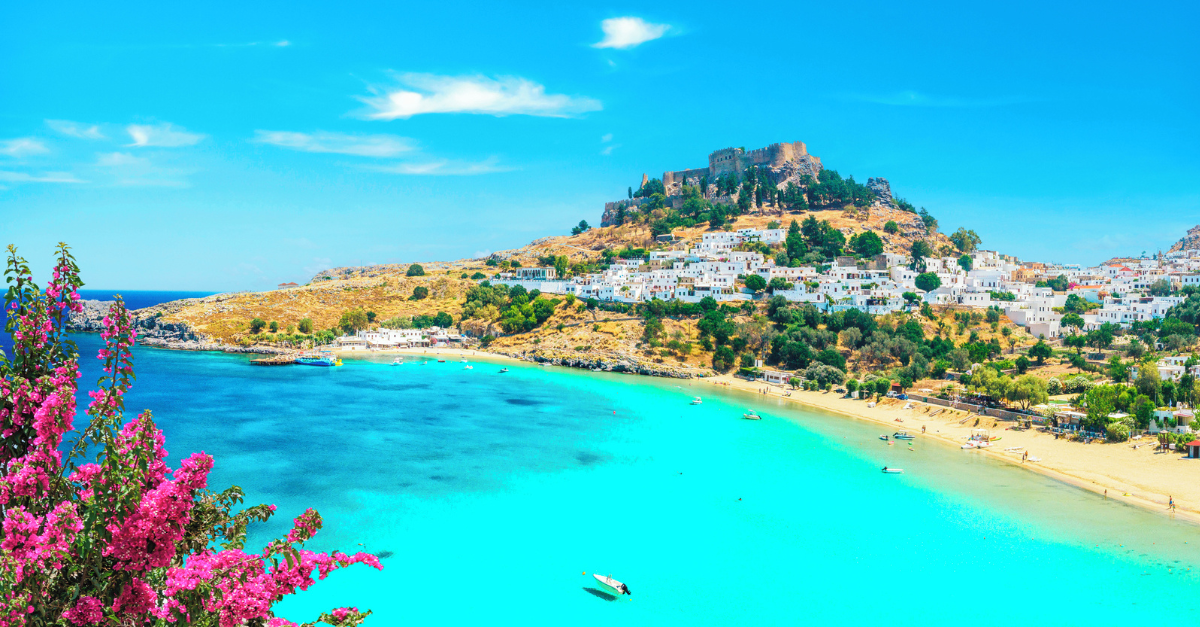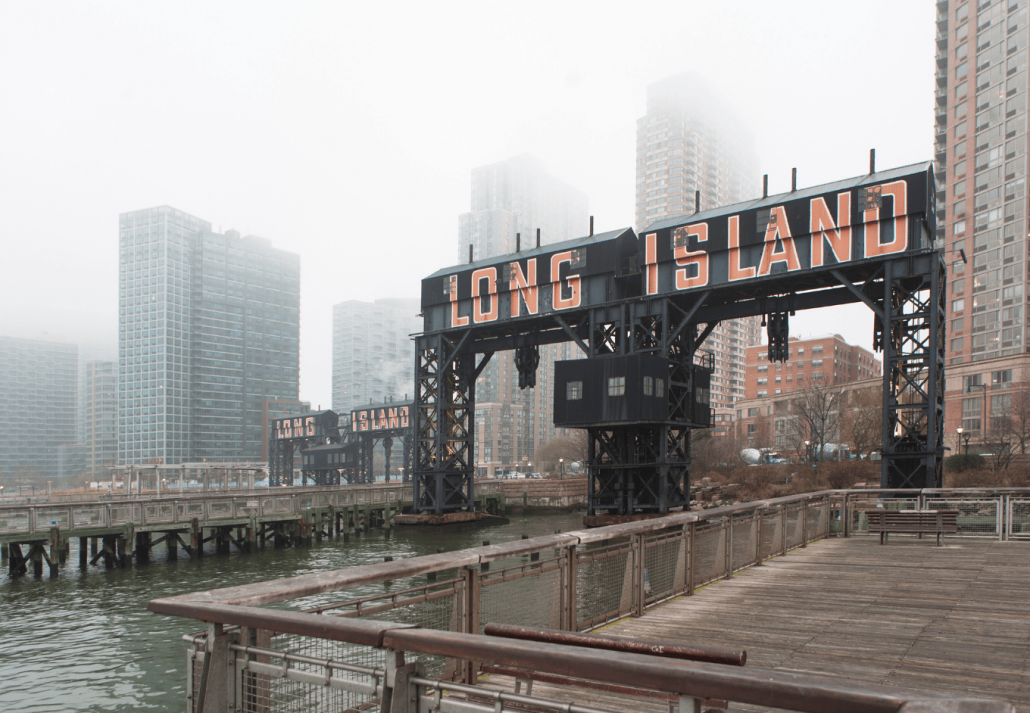Sarajevo, Bosnia & Herzegovina Travel Guide: From War to Wonder
When most people think of European travel, they picture Parisian cafés or Tuscan villas. But what if we told you one of the most powerful travel experiences we’ve ever had ... Continue Reading Read the original post Sarajevo, Bosnia...

When most people think of European travel, they picture Parisian cafés or Tuscan villas. But what if we told you one of the most powerful travel experiences we’ve ever had was in Sarajevo, the capital of Bosnia & Herzegovina?
Why Visit Bosnia and Herzegovina?
For powerful history, resilient culture, affordable travel, and unforgettable experiences in cities like Sarajevo and Mostar.
This country may not be on every traveler’s radar, but it should be. Bosnia & Herzegovina is a place where history isn’t just told, it’s felt. It’s where war-torn buildings stand beside buzzing cafés, and where the pain of the past fuels the pride of the present.
Sarajevo: Europe’s Most Resilient Capital
Welcome to Sarajevo, the heart of Bosnia and Herzegovina, and a must-see destination for travelers seeking more than just postcard views. This is a place that teaches you what war, peace, and resilience really look like.

Sarajevo is a vibrant city and the capital of Bosnia and Herzegovina. Sarajevo is unlike anywhere else in Europe. Minarets rise beside cathedrals. Ottoman bazaars sit beside Austro-Hungarian buildings. Bullet holes scar apartment walls. And yet, Sarajevo pulses with life.
This is a city where mosques, churches, and synagogues share the same skyline. Where Olympic dreams and war nightmares happened within a decade of each other. And where survival isn’t just a chapter in its history, it’s the theme.
Visiting Sarajevo Today: Where the Past Meets the Present
Sarajevo may still carry the trauma of war, but it’s not stuck in it. This compact city is buzzing with life, color, and heart. From museums that share personal stories of wartime survival to cafés that serve the best coffee in Southeast Europe, there’s no other place quite like it. Let’s start your Sarajevo travel guide with the essentials.
Best Things to Do in Sarajevo

1. The Tunnel of Hope
Start your visit at the Tunnel of Hope, a hand-dug lifeline during the nearly four-year Siege of Sarajevo. Located beneath the Sarajevo Airport, this 800-meter-long tunnel once connected the besieged city to free territory. It allowed civilians to transport food, medicine, fuel, and even electricity.
Walking through the cramped tunnel gives you a chilling sense of how Bosnian Muslims risked everything just to survive. It’s one of the most important stops when you visit Sarajevo. This narrow passage, now part of a museum dedicated to survival, allowed humanitarian aid, weapons, and people to pass through when all other routes were cut off. You can book tours to the Tunnel of Hope from Sarajevo here.
2. Sarajevo Roses
Scattered throughout the city center are red-painted craters called Sarajevo Roses. Each one marks a spot where a mortar shell killed civilians. These marks aren’t just memorials, they’re part of the sidewalk. You’ll walk over them while buying coffee or waiting for the tram. It’s one of the many ways Sarajevo wears its scars openly.
3. War Museums That Tell the Truth

4. Bascarsija and the Old Town

The heart of Sarajevo is its Old Town, where narrow streets wind past copper shops, mosques, and cafés that feel lifted from another century. In Bascarsija, you’ll find the Gazi Husrev-beg Mosque, dating to the Ottoman period, still active and open to visitors.
Sip Bosnian coffee at Veliki Park, watch pigeons swirl at Sebilj Fountain, and wander the stone-paved streets where national identity was forged.
5. Latin Bridge & the Spot That Changed the World
One of Sarajevo’s most famous cultural sites is the Latin Bridge. This is where Gavrilo Princip assassinated Archduke Franz Ferdinand, igniting World War I. Today, a small but powerful exhibit beside the bridge walks you through the event that reshaped the 20th century.
6. City Hall (Vijecnica)

Once the National Library, Sarajevo’s City Hall was destroyed in 1992 by Bosnian Serb forces. Over two million irreplaceable texts were lost. Today, the building has been restored and now hosts exhibitions about Sarajevo’s past and future. It’s one of the best examples of how this city refuses to be defined by destruction.
7. Free Walking Tours in Sarajevo
One of the best ways to enjoy Sarajevo is by joining a free walking tour. Knowledgeable local guides take you through derelict buildings, war memorials, monuments dedicated to resistance, and peaceful parks that were once battlegrounds.
You’ll walk past bullet holes that still scar façades and hear personal stories from survivors. These tours are often tip-based and worth every mark.
8. Sacred Heart Cathedral & the Religious Mosaic
Sarajevo is a rare European capital where mosques, churches, and synagogues share space. Don’t miss the Sacred Heart Cathedral, which sits in the Catholic quarter, and the Old Jewish Cemetery, one of the oldest in the Balkans. The city’s interfaith roots were tested during war—but many Bosnian Serbs, Bosnian Muslims, and Croats still live side by side here.
9. Exploring Sarajevo’s City Center: Where History Meets Daily Life

One of the most compelling parts of exploring Sarajevo is that its city center is as much a historical timeline as it is a modern hub. In this compact city, you can stand in a square where emperors once ruled, enjoy coffee just steps from a building pocked with bullet holes, and walk into a museum that used to be a library.
Everything you want to see is within walking distance. It’s what makes visiting Sarajevo so powerful—you’re not just seeing a city; you’re living its history.
10. The National Museum: Understanding Bosnia’s Identity
No trip to Sarajevo is complete without a visit to the National Museum of Bosnia and Herzegovina, located just outside the main tourist zone. This massive cultural complex holds some of the region’s most significant artifacts, including the famed Sarajevo Haggadah, one of the world’s oldest Jewish manuscripts.
It also houses extensive exhibitions on modern history, the Bosnian army, and how Bosnian culture evolved through centuries of occupation and resistance. The museum is a cornerstone for anyone wanting to better understand the identity and resilience of the Bosnian Muslims, Serbs, Croats, and Jews who call this country home.
11. Sarajevo Cable Car & the Yellow Fortress: Viewpoints With a Story

For panoramic views of Sarajevo, ride the Sarajevo Cable Car up to Mount Trebevi?. This area was once used by snipers during the siege. The ruins of the 1984 Winter Olympic bobsled track, now covered in graffiti, lie just a short walk from the summit.
Another must-see is the Yellow Fortress. Come here at sunset to enjoy the best views of the city center and the surrounding hills. Locals gather here to break Ramadan fasts, couples picnic with cevapi, and the call to prayer echoes across the valley. It’s beautiful, humbling, and unforgettable.
12. Sarajevo’s Old Jewish Cemetery: A Silent Witness to History
High above the city, tucked into the surrounding hills, lies the Old Jewish Cemetery, a quiet but powerful place. Dating back to the 16th century, it is one of the largest and most significant Jewish cemeteries in Southeast Europe.
During the Bosnian War, this sacred site was tragically used by snipers due to its strategic elevation. Today, it remains a testament to the long presence and persecution of the Jewish community in Sarajevo.
From the Ottoman Empire to Sniper Alley

Sarajevo’s history is layered with complexity. Over the centuries, it’s been ruled by the Ottoman Empire, shaped by the Austro-Hungarian monarchy, and absorbed into Socialist Yugoslavia. It was here that Archduke Franz Ferdinand was assassinated in 1914, sparking World War I. And decades later, it became the epicenter of another world-changing conflict, the Bosnian War.
After Herzegovina declared independence in 1992, the city found itself under siege by Bosnian Serb forces. The Sarajevo siege became the longest siege of a capital city in modern history, lasting nearly four years.
For nearly 1,400 days, Sarajevo’s compact city center was shelled from the surrounding hills. Serbian forces, armed and supported by the Yugoslav People’s Army, targeted residential blocks, hospitals, schools, and markets. The city’s lifeline, the airport runway, was under international control, cutting it off from the rest of the world.
The international community debated. Civilians were left to dodge mortar shell explosions, sniper fire, and hunger. And yet, they endured. That’s why exploring Sarajevo today is about more than ticking off attractions, it’s about walking through survival.
A Forgotten War, A Canadian Story

Between 1992 and 2004, over 40,000 Canadian troops served in the Balkans as United Nations peacekeepers. It was Canada’s largest military deployment since the Korean War. But this wasn’t peacekeeping as we usually imagine it. They were under fire. They faced war crimes firsthand. And they were largely forgotten back home.
And yet, back home, it barely registered. No embedded reporters. No front-page headlines. Just background noise behind O.J. Simpson and Tonya Harding.
But here in Bosnia & Herzegovina, those Canadians made a difference. They patrolled ceasefires, protected aid convoys, and documented war crimes when others turned away. This trip brought that forgotten story to life, and Sarajevo was the beating heart of it.
In places like the Medak Pocket in 1993, they stood between civilians and violence. It marked a rare moment when Canadian troops directly engaged in combat while protecting civilians. Their reports, documenting war crimes and mass destruction, contributed to international awareness and eventual accountability.
Sarajevo and World War II: A City Torn Twice
While most people associate Sarajevo with the Bosnian War, the city also played a significant role during World War II. Under Nazi occupation, Sarajevo’s Jewish population was devastated, and resistance movements formed deep within the hills and tunnels of the region. The city fell under a fascist puppet regime, later liberated by partisans supported by Tito’s communist government, laying the groundwork for former Yugoslavia.
Walking through Sarajevo’s Old Town, you’ll still find monuments and plaques marking these events, especially near the Jewish Cemetery and memorials dedicated to fallen resistance fighters.
The Bosnian War Ended, But the Story Continues
While the Bosnian War ended in 1995 with the Dayton Accords, the aftershocks are still felt today. The agreement split the country into two main entities: the Federation of Bosnia and Herzegovina and Republika Srpska, where many Serbs live today.
This division has created a complex system of governance, often paralyzing political progress. But on the ground, in places like Sarajevo, locals are choosing connection over separation. It’s this human spirit that defines Bosnian culture today.
Our Sarajevo Hotel Pick

We stayed at Hotel Boutique 36, just steps from Sarajevo’s historic center. With secure parking, comfortable rooms, and first-class service, it’s the perfect base for exploring the city.
Day Trip to Mostar: History in Stone

Just a two-hour drive from Sarajevo, the town of Mostar is one of the best places to visit in Bosnia & Herzegovina. Its famous Old Bridge (Stari Most) was destroyed during the war, then rebuilt stone by stone in 2004. Today, it’s a symbol of unity, resistance, and rebirth.
The iconic Stari Most (Old Bridge), originally built in the 1500s, was destroyed during the war and meticulously rebuilt in 2004. Today, local divers leap from it in a ritual that blends tradition and adrenaline.
Wander through Mostar’s Ottoman-era streets, sip coffee by the Neretva River, and climb the minaret at Koski Mehmed Pasha Mosque for a panoramic view. The city is still divided, Bosniaks on one side, Croats on the other, but tourism has become a quiet bridge between them.

Wander through the bazaar, sip coffee by the river, and don’t miss:
Koski Mehmed Pasha Mosque – Climb the minaret for stunning city views. War ruins and cultural museums – Offering context to Mostar’s past. Hotel Sinan Han – A perfect place to stay, just 100 meters from the bridge.But Mostar is still divided—Bosniaks on one side, Croats on the other. Two schools. Two realities. Yet, one shared skyline and a longing for unity.
Where to Stay in Mostar: We stayed at Hotel Sinan Han—modern rooms, rooftop terrace, and just 100 meters from the bridge.
Visiting Eastern Bosnia: Echoes of War and Peace
While Sarajevo anchors any itinerary, travelers should also consider visiting Eastern Bosnia, where towns like Srebrenica and Višegrad hold darker, less-touristy chapters of the past. These are areas most impacted by war crimes and ethnic cleansing during the 1990s.
The drive from Sarajevo’s city center to Eastern Bosnia reveals another side of the country, more rural, more rugged, but equally rich in stories. You’ll gain a better appreciation for the complexity of Bosnia and Herzegovina as a nation still healing.
Bosnia & Herzegovina Travel Tips
Planning your Bosnia & Herzegovina adventure? Here’s what to know:
When to Go: Spring and fall are ideal—mild weather, fewer crowds. Currency: Bosnian Convertible Mark (BAM). Some places accept euros, but BAM is preferred. Transport: Renting a car is the best way to explore both Sarajevo and Mostar. Roads are good and scenic. Safety: We always felt safe. The people are welcoming, and hospitality is genuine. Costs: Bosnia & Herzegovina is incredibly affordable. You can travel well here on a modest budget.Why You Should Visit Bosnia & Herzegovina in 2025

Bosnia & Herzegovina is one of the most unforgettable places we’ve visited. It’s emotional, educational, and deeply rewarding. Sarajevo, in particular, taught us that beauty and devastation can coexist and that rebuilding is not only possible but also powerful.
This country was abandoned by the West during its darkest hours. And still, people rebuilt. That’s why visiting Bosnia and Herzegovina is so powerful. It’s not just about history. It’s about what comes after.
It’s also about understanding our role, especially as Canadians. Canadian peacekeepers were here before NATO and before the U.S. stepped in. Their contributions were real, and rarely talked about. This isn’t just a destination. It’s a story. One that still matters. One you’ll carry long after you leave.
Bosnia & Herzegovina Will Stay With You
Bosnia and Herzegovina isn’t just a destination, it’s a story. A warning. A celebration of survival. It demands your attention. And if you travel with an open heart, it will reward you with unforgettable memories, breathtaking landscapes, and a deeper understanding of what resilience truly looks like.
Let this be the trip that changes the way you see the world. Because Bosnia doesn’t whisper its past, it speaks it. And if you listen, you’ll never forget it.
Plan Your Trip:
Book Sarajevo tours on GetYourGuide Rent a car via RentalCars.com Browse hotels on Booking.comReady for a journey through Sarajevo and beyond? Bosnia & Herzegovina travel will change the way you see the world.
Discover Sarajevo: A Balanced Guide to Its Culture and History


 AbJimroe
AbJimroe 






























